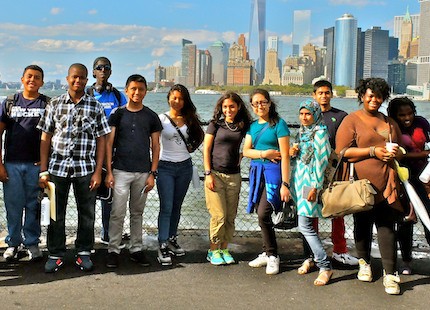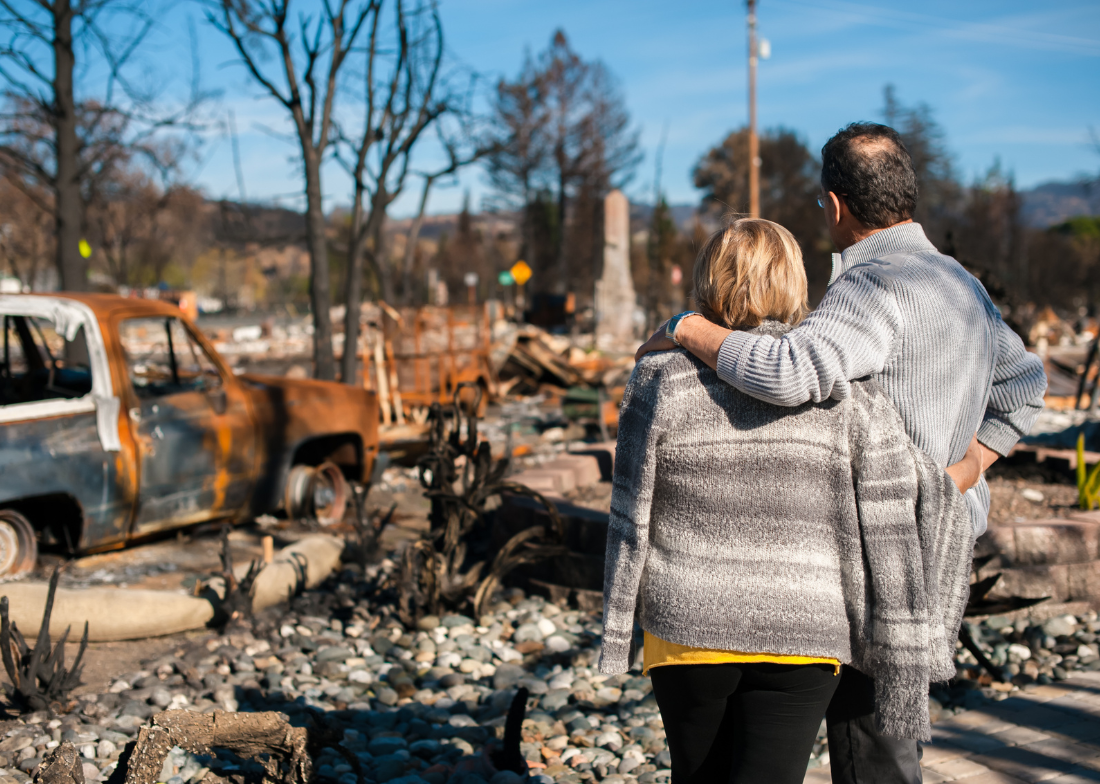Can Making a Difference Be Measured?
|
November 20, 2012

In the wake of Superstorm Sandy, there’s a surge in mainstream media reports connecting extreme weather to climate change. And 2012 is on track to be the most extreme year globally and the hottest on record for the US. With these trends, it isn’t surprising that 70% of Americans currently believe in the reality of global warming, and 77% say global warming should be a priority for the President and Congress.
Even with these promising public opinion results, however, ACE’s work isn’t done. We know from polling data over time that America’s attitude about global warming fluctuates wildly and is heavily influenced by seasonal weather, the economy and how much the topic appears in the media. When the next Snowmageddon or ClimateGate story floods the internet news sites, we’re worried that public interest in climate change will drop, just as it has in the past.
How can we keep the public’s interest in climate change strong over time and make it resilient enough to withstand the often-conflicting reports coming from the media?
Part of the equation is making climate change into a moral issue, as Dr. Amy Luers has written about recently. Another important factor is improving the public’s climate science literacy. A national poll suggests that 52% of US adults would get an F on a basic climate science quiz. Nationwide, teens score even lower. If we improve America’s understanding of the science, moral implications of the consequences and solutions to global warming, we make an investment in a lasting public will for action.
At ACE, we contribute to this investment by teaching students about climate change in ways that inform and inspire. But as a science-driven organization, we want more than anecdotal evidence that we’re making an impact with youth.
To measure this impact, we partnered with experts at Yale, George Mason and Stanford Universities to conduct a student survey during the 2011-2012 school year that measured the ACE Assembly’s impact on knowledge, attitude and behaviors related to climate change. After collecting thousands of data points and presenting at conferences across the country, we are now preparing to submit our research for publication in a handful of peer-reviewed journals. Below are some key highlights.
Evaluation Method
Random Sampling: In each of ACE’s regions, for every 5,000 students booked to view the ACE Assembly, we randomly selected one school to administer the survey. Within each selected school, we randomly selected three classrooms to take part.
Sample Size: We collected and analyzed surveys from 49 schools, 124 classrooms and 2,847 students representing 9 ACE regions.
Pre-Post Testing: Students in participating classrooms completed surveys before and after seeing the ACE Assembly. For 1,338 students, pre and post surveys were matched using student ID numbers (Fall semester) and last four digits of cell phone numbers (Spring semester).
Survey Measures: The survey contains a test of climate science knowledge; self-reported attitudes about climate change; and self-reported behaviors, intentions, and self-efficacy regarding energy conservation.
Highlighted Results
ACE increases climate science knowledge.
Before the ACE Assembly, only 37% of students scored a passing grade by correctly answering 6 or more of the 11 multiple-choice questions.
After the ACE Assembly, 56% of students passed the test.
Overall, climate science knowledge scores improved 27% after the Assembly.
With better understanding of climate science comes changes in climate attitudes.
Using a survey tool developed by the Yale Project on Climate Communication, after the ACE Assembly we saw:
– A 43% increase in students who are alarmed or concerned about climate change (from 42% to 60%).
– A 39% decrease in students who are disengaged, doubtful, or dismissive about this issue (from 23% to 14%).
ACE improves energy behaviors.
After the ACE Assembly:
– Intentions to take climate-protecting actions such as unplugging gadgets, turning off lights and taking shorter showers increased for 59% of students.
– 45% of students adopted at least one new climate-protecting behavior.
– 13% of students adopted more than one new behavior.
ACE stimulates discussion of climate and energy.
After the ACE Assembly:
– The number of students who reported talking with their parents about climate change more than doubled (from 6% to 15%).
– The number of students who reported talking with their friends about climate change more than doubled (from 9% to 21%).
– Intention to ask parents or friends to reduce their footprints increased in 60% of students.
ACE empowers students to work with others on climate change.
After the ACE Assembly:
– 48% of students felt more confident in their ability to help start a project to reduce their school’s carbon footprint.
– 38% of students felt more confident that they could explain global warming to others.
We believe these results show that the ACE Assembly has the power to initiate important shifts in students’ perspectives on climate change. As our ACE Senior Educator, Lonna Dawson, told Al Gore last week during the Climate Reality Project’s Dirty Weather Report, the students we work with are a force, and we are empowering them with the knowledge and confidence to change the world.
Join our Youth Action Network
More Blog Posts
Driving India towards self sufficiency and freedom from oil
India can shield itself from oil-price shocks and global pressure over Russian barrels by leaning harder into two strengths it …
Read More
Unnatural, Not Unprecedented
For two weeks, residents of Southern California endured a waking nightmare. Parents raced against time – hurrying down the driveway …
Read MoreCrafting a Vision for the Future: My Experience at LCOY USA 2024
Dry and sunny Tempe, Arizona where temperatures have been over 100 F for 113 consecutive days, delegates gathered to attend …
Read More